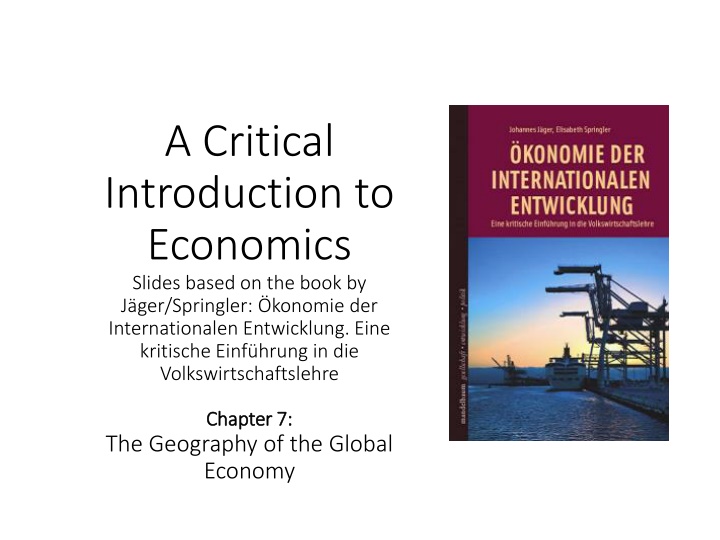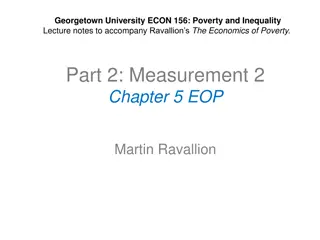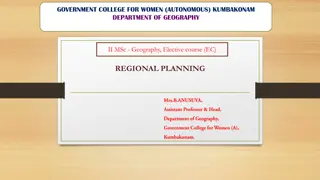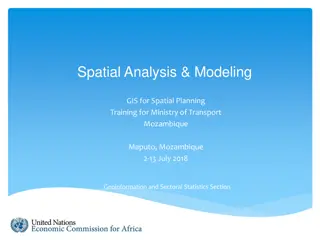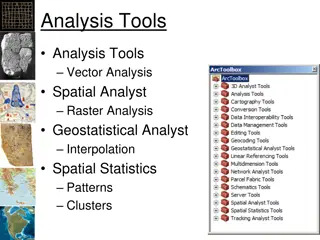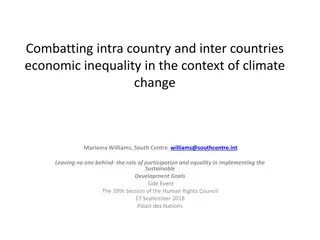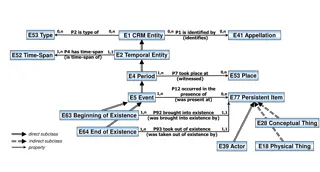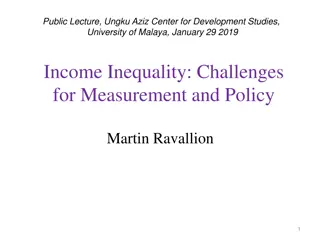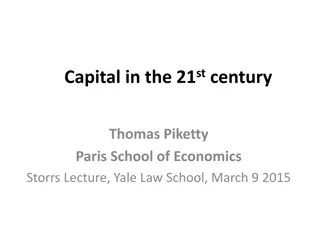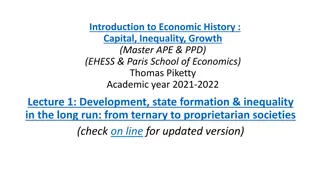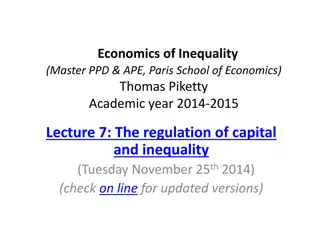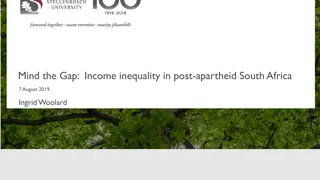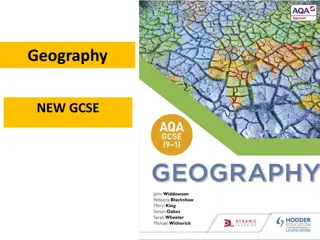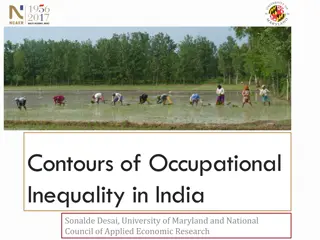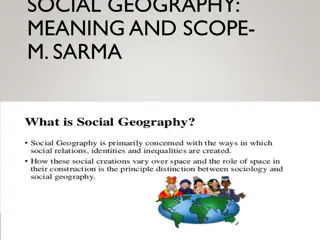The Geography of the Global Economy: Understanding Spatial Inequality
Chapter 7 delves into the intricacies of the global economy's geographical aspect, exploring topics such as neoclassical economics, Keynesianism, and political economy. It discusses spatial patterns, market imperfections, modernization in developing countries, and the effects of traditional trade theories on global convergence. The chapter also highlights the role of good governance, the Washington consensus, and post-Washington consensus in fostering modernization. Through a critical lens, it examines how spatially concentrated demands impact development across regions and urban areas.
Download Presentation

Please find below an Image/Link to download the presentation.
The content on the website is provided AS IS for your information and personal use only. It may not be sold, licensed, or shared on other websites without obtaining consent from the author.If you encounter any issues during the download, it is possible that the publisher has removed the file from their server.
You are allowed to download the files provided on this website for personal or commercial use, subject to the condition that they are used lawfully. All files are the property of their respective owners.
The content on the website is provided AS IS for your information and personal use only. It may not be sold, licensed, or shared on other websites without obtaining consent from the author.
E N D
Presentation Transcript
A Critical Introduction to Economics Slides based on the book by J ger/Springler: konomie der Internationalen Entwicklung. Eine kritische Einf hrung in die Volkswirtschaftslehre Chapter 7: Chapter 7: The Geography of the Global Economy
Chapter 7: The Geography of the Global Economy Global and spatial inequality and the question of development Neoclassical economics Keynesianism Political economy
7.1.1 Neoclassical economics: General Approach Space = distance (transport costs) land/place = factor of production Geography of economic activities is a result of optimization process of firms and households
7.1.2 Key-concepts in neoclassical economics (1) Traditional trade theory and global convergence (2) Spatial implications of market imperfections (3) Modernisation in developing countries (4) Regional and urban spatial patterns
(1) Traditional trade theory and global convergence Comparative advantage (David Ricardo) Effects of trade and the movement of factors of production Free trade leads to global convergence
(2) Spatial implications of market imperfections New Economic Geography and New Trade theory Market imperfections / external effects may have agglomeration effects and lead to divergence different endowment can lead to divergence Endogenous growth theory Positive externalities of education and research suggest public spending on education and resource increases efficiency
(3) Modernisation in development countries Neoclassical development economics Trickle down effect Good governance Washington consensus Post-Washington consensus
(4) Regional and urban spatial patterns Spatially concentrated demand and land use patterns Land market (private ownership) leads to optimal outcome Spatial monopolies
7.1.3 Implications for economic policy Policy implications mainly based on traditional trade theory: Good governance implies liberal economic policy in the spirit of the (Post-)Washington consensus Rely on land market as an institution that efficiently assigns resources Policy implications based on endogenous growth theory / new economic geography: Public spending on education Public spending on research and development Land markets produce optimum results in the urban context
7.2.1 Keynesianism: general approach Critique of neoclassical approach Persistent spatial disequilibria and need for government intervention Export-basis theory Polarisation theory (Gunnar Myrdal) Spread: growth in one region leads to growth and convergence between the trading regions Backwash: movement/drain of factors of production (to the more profitable area) creates unemployment, loss of income Myrdal concludes that liberal market forces tend to create more imbalances Prebisch-Singer theorem Deterioration of the terms of trade for primary products
7.2.2 Key-concepts in Keynesianism Thirlwall s law: Export growth/income elasticity of importance and balance of payments constraint are crucial for growth Stages of banking and structuralist approach to endogenous money Profit-led and wage led development
7.2.3 Implications for economic policy Structuralist policy based on temporary protectionism instead of free trade State intervention: big push Import substitution industrialization (ISI) Export substitution
7.3.1 Critical Political Economy: General Approach Production implies transformation of nature and space and is socially and historically constructed Persistent uneven global geography as a starting point for analysis Uneven geography as consequence for /condition of a capitalist mode of production Different but linked spatial levels of analysis Shifting scales (politics of scale)
6.3.2 Key-concepts in critical political economy 1. Explaining the uneven global geography 2. Explaining (national) development (caching-up) 3. Local and urban development
(1) Explaining the uneven global geography Theory of (Neo-)Imperialism points to the power of globally dominant capitalist states World Systems theory distinguishes between core, semi-periphery and periphery Neo-Gramscian approaches focus on the asymmetric power in international institutions and its implications
(2) Explaining (national) development (caching-up) Dependency theories explain economic and political mechanisms of dependency in peripheral countries and provide strategies to overcome them Regulationist perspectives explain specific forms of dependent development and provide insights for alternative development strategies
(3) Local and urban development Critical geography focuses on (local) conflicts in a multi-scalar perspective Critical Land rent theory analyses spatial developments and the role of land and real estate markets for urban dynamics and capitalist accumulation
7.3.3 Implications for economic policy Global level Aim for less interventionism by globally dominant hegemonic powers Demand a different organisation of global trade and finance National level Socio-economic and political pre-conditions for alternative developments (changing class power in the periphery) Self-reliant development Local / urban level Multi-scalar struggles and strategies Restricting lend rent mechanism, decommodification of land and real estate
